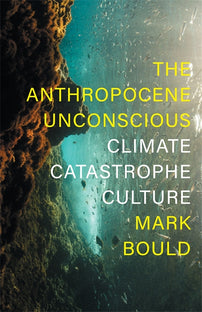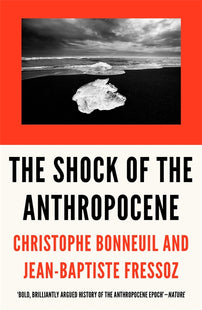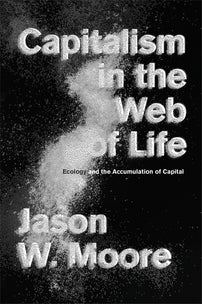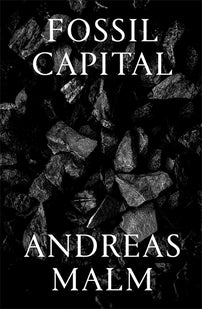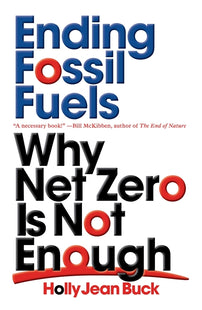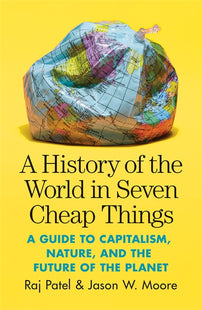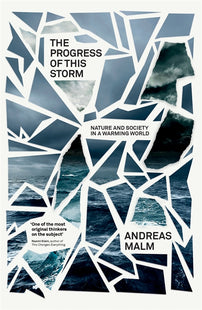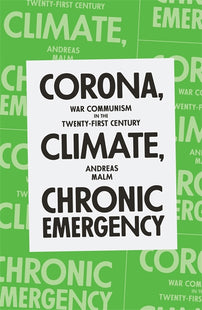The Anthropocene unconscious of some alien invasions
While sci-fi novels are replete with references to climate change, sci-fi cinema leave a lot to be desired in their narration of the effects of the climate crisis. But what if we watch them against the grain? Here, Mark Bould rewatches some recent alien invasion movies to uncover the Anthropocene unconscious at work in them.

Climate change is not going to happen. It is already happening, and deep down our culture knows it.
Science fiction – including ‘cli-fi’, that odd offshoot that spends so much time denying it’s sf – has for three decades conscientiously and imaginatively reported upon the escalating anthropogenic crises we are living through.
Well, prose sf has. Think of Octavia Butler’s Parables novels, Gwyneth Jones’s Bold as Love cycle, Kim Stanley Robinson’s New York 2140 and The Ministry for the Future…. Sf cinema, however, leaves a lot to be desired. Sure, there are movies set after the catastrophe, from Mad Max: Fury Road (2015) to the little Vietnamese gem, Nuoc 2030 (2014), but for actual treatments of climate change, it’s pretty much a toss-up between The Day After Tomorrow (2004) and Geostorm (2017).
Unless, that is, we look at the less literal – and sometimes unconscious – ways sf films process climate catastrophe. Then, it’s a whole other can of worms.
Take Chris McKay’s recently released The Tomorrow War (2021). It might the dumbest film of the year so far – competition remains stiff – but even so it uses sf’s metaphoric potential to express climate anxieties. The film features extended CGI-heavy action sequences and numerous bits plundered from other movies and cranked all the way up to 11. Dan (Chris Pratt) is an Iraq War special ops veteran turned public high school science teacher who yearns to do science in the private sector instead. He lives with his wife, Emmy (Betty Gilpin), and young daughter, Muri (Ryan Kiera Armstrong), in a large suburban home, but is estranged from his father, James (J.K. Simmons). A traumatised Vietnam vet who decades earlier abandoned his wife and son to protect them from his anger and violence, James is now a government-distrusting, kinda off-grid, possible merc – as heavily bearded as he is armed.
[book-strip index="1" style="buy"]In December 2022, soldiers jump back in time from 2051 on a mission to recruit their parents and grandparents for the future war against extra-terrestrial invaders. Called White Spikes, the aliens are more implacable than Terminators: ‘They have no use for prisoners, government, technology, money, nothing. We are food. And they are hungry.’ In just three years, they have reduced the global human population to under 500,000.
So the film is organised around an appeal across time for the present to save the future from what is explicitly described as ‘an existential threat’ and ‘an extinction-level event’.
And there’s more. Dan is conscripted to fight in the future – alongside, to no one’s very great surprise, his grown-up daughter. When he returns to 2023, he works out that the White Spikes did not land in 2048, but much earlier. Beneath a talon ripped from an alien corpse is volcanic ash from the circa 946AD climate-disrupting Millennium eruption, one of the largest in the last 5000 years. And since the White Spikes first appeared in northern Russia, this can mean only one thing: in 2023, their crash-landed spaceship is still buried frozen beneath the ice of the Academy of Sciences Glacier on Komsomolets Island – which global-warming projections predict will melt by 2048, thus unleashing the alien apocalypse.
And still, there’s more.
The centre of future military operations and the site of humanity’s last stand is Deepswell-9, a fortified oil rig in the Caribbean. In Dan’s classroom, there’s an electronic display about habitat destruction and species die-offs. On the wall of Muri’s bedroom is a massive picture of a butterfly, that emblem of non-linear determinism familiar from chaos theory, time-travel stories and the complex, tipping-point causation of climate change…
So if a movie this dumb knows it’s about climate change, what about a more nuanced one?
Denis Villeneuve’s Arrival (2016) also uses alien visitors to imagine climate change as a single ruptural event that changes everything. But unlike The Tomorrow War, it does not announce that that is what it is doing – possibly because it does not even know that that is what it is doing. Frederic Jameson argues that to unlock the unconscious of a text, we must reimagine it ‘in terms of a particular master code’. Which is easier than it sounds. For example, when Brokeback Mountain (2005), supposedly ‘the first gay western’, was nominated for the Best Picture Oscar, host Jon Stewart introduced a sequence of ostensibly straight moments from earlier westerns that suddenly looked very queer indeed. The montage ditched the master code of unthinking compulsory heteronormativity in favour of one that simply asks what happens if you stop assuming everyone in these films is straight. Admittedly, it reduced queer theory to a parlour trick, but it nonetheless revealed the currents of desire flowing through the genre – in that part of the textual unconscious Pierre Machery describes as the ‘things which must not be said’.
And to unlock the Anthropocene unconscious of Arrival, we must do something similar: stop assuming that, just because it lacks The Tomorrow War’s bluntness, it is not also about climate change.
The nature and design of its extra-terrestrials is key. There is something genuinely alien about the heptapods: they do not possess the bilateral symmetry we take for granted; they experience time differently to us, simultaneously rather than sequentially; and they come not just from the depths of space but also from the abyss of time. That is, they come from the Weird, that realm associated with H.P. Lovecraft that was revived and revised in the twenty-first century, often as a way to think about climate change – as in China Miéville’s ‘Covehithe’ – and to re-entangle us in the often very strange web of life – as in Jeff VanderMeer’s Southern Reach trilogy.
Physically, the heptapods resemble banyan trees, but also squid. Their limbs flex like tentacles but are sometimes jointed like crab legs. The end of one limb opens out into a seven-digited ‘hand’ that looks like the underside of a starfish, and from it sprays cephalopodic ink. These intertidal and aquatic associations – including the darkly clouded skies into which their spaceships seem to dissolve on departure – imply a world and a future submerged. Thus, they foreshadow our rising tides, the coming loss of low-lying islands, major river deltas and coastal cities. Of countless lives, human and otherwise.
The heptapods visit present-day Earth because in 3000 years they will need our help, which requires humankind to unite and thrive. The film displaces the risks of climate change onto more familiar conflicts, presenting China, Russia, Pakistan, Sierra Leone, Sudan and Venezuela as inherently violent hotheads, and the US as fundamentally committed to peace, co-operation, rationality and reasonableness, and only reluctantly turning to military options. Such risible geopolitics capture something of the way in which the long history of imperialism and ongoing international power struggles both drive climate change and distribute its impact on peoples, countries and regions.
When the heptapods arrive, the US military recruits linguistics professor Louise Banks (Amy Adams) to translate the aliens’ language. But as she learns it, it rewires her brain. She starts to experience time simultaneously – and the film gets to play its famous trick on the audience. Banks suffers traumatic flashbacks to her daughter’s childhood, adolescence and slow death from a rare debilitating disease, only for it to then be revealed that they are actually flashforwards to things that will happen. So, the film asks, with such foreknowledge should Banks still have a child?
It is an impossible decision, with no right answer. And it is not unlike the dilemma that faces us all. We know that massive climate disruption is locked in. That it will kill at least millions and condemn billions more to lifelong immiseration. So what is to be done?
Perhaps surprisingly, The Tomorrow War can be of help. Although again, we need to move from what it consciously does – uses aliens as a metaphor for climate change – to what it does without thinking.
After teasing the first major action sequence, the film opens with a vision of suburbia, nestled among trees on a gently sloping hill. Christmas lights edge pristine detached houses, each with a double garage and a car in the driveway. Illuminated inflatable festive ornaments cluster on immaculate lawns. More lights drape over manicured trees and shrubs. Dan parks his shiny black SUV. There is a party in his house, with dozens of guests, but it never seems crowded. A massive TV dominates the wall above the fireplace. Food and drink are in lavish supply. Fairy lights tastefully abound. And, for some reason I cannot fathom, the Christmas tree revolves.
At the end of the movie, after reconciling with his father and leading a plucky ragtag mission to kill the White Spikes before they defrost, Dan returns home. Some upturned garbage bins on the sidewalk are the only trace of the rioting that swept the globe. James parks his sleek old slab of Detroit muscle in the road and Dan, having just saved the world, rights his bin and wheels it up the drive. Emmy and Muri race out to embrace him, and James meet his grand-daughter for the very first time. In voiceover, Dan – sounding just a little like Dorothy fresh from Oz – says of Muri, ‘I never told her about our seven days together nor how, in a future that now will never happen, she changed me. Forever. I’m never going to leave her. I’ll never leave this family. Because my best future it turns out was always right in front of me.’
All of which is unremarkable, unless you stop to remark upon it.
This climactic sentimental platitude is the moment when the terms of the aliens-as-climate-change metaphor are severed. Dan is back in the suburban bubble to stay. And since the White Spikes have been killed, there is no longer any reason to do anything about global warming.
To be fair, The Tomorrow War does disrupt the apparent normalcy of suburban plenitude. In the opening sequence, a lawn Santa rotates to reveal scary Krampus lurking beneath the red hood, and Emmy proudly displays a tuna Santa that is frankly grotesque (later, the hirsute James will be referred to as ‘conspiracy Santa’). In a similar vein, although the film, like pretty much all contemporary Hollywood, slavishly valorises the US military, it does also show glimpses of veterans with shattered minds and bodies. Such queasy images betray a quickly suppressed uneasiness with the way things are. They are harbingers of the things that cannot be said.
Such as the fact that the peculiar nature of American suburbs was largely determined by the automotive and fossil fuel industries. That along with real estate developers, they successfully argued that public transport infrastructure – streetcar and rail lines – was a matter of private investment, but the roads from which they benefitted were a public good and should be paid for through general taxation. That SUVs were the second largest contributor to increased global CO2 emissions in the 2010s. That defence spending – another massive transfer of public money to private profit – likewise drove Sunbelt suburban developments around aerospace and other military industries. That the Pentagon is the world’s largest consumer of fossil fuels. That, as Amitav Ghosh’s The Nutmeg’s Curse explains, a ‘non-nuclear aircraft carrier consumes 5,621 gallons of fuel per hour … as much fuel in one day as a small midwestern town might use in a year’, with ‘a single F-16 consum[ing] a third as much fuel in one hour of ordinary operations – around 1,700 gallons’ and if its ‘afterburners are engaged … two and a half times as much fuel per hour as an aircraft carrier – 14,400 gallons’. And so on.
If we reimagine The Tomorrow War in terms of this different master code, every house, every lawn, every light and plastic ornament Dan drives past, and the car in which he drives past them – each of these unconscious things that the film, in Macherey’s words, ‘is compelled to say in order to say what it wants to say’ – is revealed as yet another node in the petrocultural web scorching the Earth.
That is the existential threat we face – the tomorrow war that is already being fought today.
And frankly, we are getting our asses handed to us.
By us.
[book-strip index="2" style="display"]